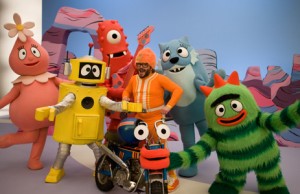 Late last week, some local newspaper asked an important question: “Big Boys Don’t Cry, Do They?” The idea being that John “Waterworks” Boehner’s ascent in Congress signals a new tolerance of adults tearing up under the pressure of strong emotions. Or, well, sort of. The story doesn’t exactly get into the social acceptability of public crying, although the blubberers quoted in the piece want it that way:
Late last week, some local newspaper asked an important question: “Big Boys Don’t Cry, Do They?” The idea being that John “Waterworks” Boehner’s ascent in Congress signals a new tolerance of adults tearing up under the pressure of strong emotions. Or, well, sort of. The story doesn’t exactly get into the social acceptability of public crying, although the blubberers quoted in the piece want it that way:
“Like many American boys and men, I was taught big boys don’t cry,” [Dan Rather] said, but our ancestors knew better. “In ancient Greek culture, men were allowed their emotions,” he said. In works like “The Odyssey,” “it was very common for men to show their emotions — it was considered even part of the heroic character and personality.”
Here at Dadwagon, we (or maybe it’s just me) have very specific feelings about whether Men should cry. That is, we/I think Men shouldn’t cry. Instead, they should almost-cry.
Why is almost-crying superior to actually-crying? I suppose I feel like there’s something positive about admitting to strong emotions while also being able to control, or at least manage, them. When I write these “What Almost Made Me Cry Today” pieces, I’m talking about moments that really did nearly produce tears, and in most cases I didn’t have to hold back the tears—they just never came, whether because the emotion wasn’t quite strong enough or because I’ve got some in-built block to the tears. Either way, I like it. I get to be sensitive and (a rarity for me) traditionally masculine at the same time. You should try it, Speaker Boehner.


